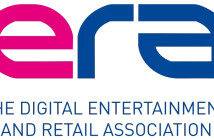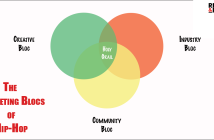If you’ve found yourself on this page, it is safe to assume you are in the music business, either on the music side and/or on the management side. You are probably researching what it takes or is required to choose music as a career. You could also be an artiste with a recording contract awaiting your signature.
This article will tell you all you need to know about royalties in the digital/streaming era. The possible leaks in your earnings that the label would be benefitting from. It isn’t illegal; ignorance is no excuse to not get ripped off in a shark-infested music industry.
Recording Contract
In layman’s terms, the recording contract is simply the artiste handing over the ownership (copyrights) of their sound recordings to a label/production coy that then sells these recordings and gives a percentage of these sales to the artiste (royalties).
Still using the product analogy, The record label gives the artiste a recording Advance from the perceived potential sales. This advance is for the artiste to settle their daily expenses and record an album (or more), depending on contract terms and advance. I’ll touch more on Artiste Advances in another article.
Types of Royalties
1. Sale of Sound Recording
Labels can sell (physical copies) the sound recording of an artiste to consumers via retailers or wholesalers. For this particular use of sound recording, major labels offer artistes 13-16% royalties on the wholesale or retail price of each copy sold.
i. Retail Royalty Base Price (RRBP) = Suggested Retail List Price (SRLP) – Packaging Deduction
The SRLP is the price the label suggests the retailer sells the album. The label could sell the album to the retailer at N100 and recommend they (retailer) sell to consumers at N150. The retailer could decide to sell between N101 and N150.
Packaging/Container Deduction includes the cost of production of the album art cover and the CD. This deduction can be between 20%-25% 0f the SRLP.
Artiste A’s royalty rate on sales is 15%, the album SRLP is N150, and the package deduction is 20%. The artiste will be paid N18 for every copy sold.
ii. Published Price to Dealer (PPD) is the wholesale price the royalties are based on. Using the same example above, the royalties will be based on N100, the price label sold to the retailer.
2. Third Party Use
The other way labels use sound recording is to license it for use by 3rd parties. The label negotiates the cost of its use – usually substantial – and is split 50/50 with the artiste.
i. Synchronisation License: For use in commercials, movie soundtracks, and TV Shows.
ii. Greeting Cards
iii. Compilation License: Do you remember the days of John 3:16 collections in the CD era? Hit songs from different labels are put and sold on a CD. One label acquires 3rd party license from all the labels that own the singles they wish to compile into a CD.
Royalty Discounts
Now that we are done with the types of royalties to expect from your recording contract, let’s talk about the deduction clauses to take note of.
1. Breakage Deduction
In the distribution stage of physical albums, they may undergo some mishandling, resulting in the breakage of some copies. Retailers and the label won’t bear the loss of breakages. The label charges it to the artiste.
The breakage deduction is usually between 10% – 15% of the total copies produced. If the label had 100,000 CDs, it would pay royalties for 85000 – 90,000 CDs instead.
2. Reserve Deduction
Physical copies of albums are produced and shipped out in batches to various retailers worldwide. The label will not know the exact amount of copies that have actually been sold to consumers until an audit is carried out in 2 years. Retailers will return all unsold copies of the album and exchange them for a new album (by the same artiste or another).
Pending this audit, the label holds on to 25% of the artiste’s royalties in reserve. If it so happens that more CDs than anticipated were sold, the artiste is balanced from the reserved.
3. Free Goods Deduction
As part of the album marketing campaign, the label would be required to give out free album copies to retailers to increase overall album sales. Royalties will not be paid on free goods, which can be negotiated to 10%-15% of produced CDs.
For example, the label could offer 10-15 free CD copies to retailers that place specific orders for an album.
Clear Picture
Artiste A has a deal that gives him 15% of royalties from sales of recording, 10% breakage deduction, 10% free goods deduction, and 25% reserve deduction. Artiste A’s label has produced 100,000 CDs with an RRBP of N120.
- Breakage deduction of 10% means Artiste A will be paid royalties on 90,000 CDs
- Free goods deduction at 10% means Artiste A will be paid royalties on 80,000 CDs
- Reserve deduction at 25% means the label reserves N4 and remits N14/copy to Artiste A.
- If 50,000 copies are sold by the end of the album cycle (2 years post-release), Artiste A would have been paid N700,000, and the reserve account would amount to N200,000.
- The reserve is released to Artiste A if the recording advance has been fully recouped.
Internet Streaming Royalties
These are royalties from satellite radios, webcasting, Digital Streaming Platforms (DSPs), cable, and webcasting. They are usually paid directly to the artistes and the label.
i. Interactive Streaming: These platforms allow users to listen to a particular song multiple times. Examples are these DSPs; Apple Music, Tidal, Spotify, Amazon Music, Audiomack, Boomplay, etc.
ii. Non-Interactive Streaming: Listeners can’t listen to a particular song multiple times. Examples are iRadio, Pandora, and other satellite radios.
Major labels, sub-labels, or affiliated production companies usually begin paying their artistes sales recording royalties upon recouping their initial recording advance fee.
Smaller independent labels usually have a 50-50 profit-sharing deal with the artiste. i.e. They only pay royalties (sale and third-party use) after the recording advance has been recouped.
Despite the knowledge you’ve acquired, ensure you have an experienced entertainment lawyer go through and interpret your recording contract before you sign it.





3 Comments
Pingback: Rhyme & Reason® – Music Biz: The Exclusive Recording Artist Agreement
Pingback: Rhyme & Reason® – MUSIC BIZ: ARTISTE ADVANCE
Pingback: Rhyme & Reason® – Hip-Hop Education: 360º or 360 Agreement